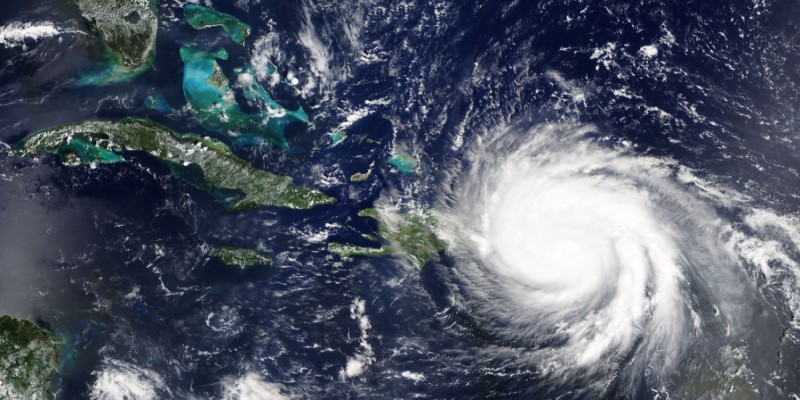
By Anayat Durrani
Whether it’s a hurricane, flooding or an earthquake, the next step is mobilizing to rebuild communities affected by natural disasters. One option that has been used to support disaster relief and recovery efforts is the EB-5 program. By providing funding for projects that support recovery, the program can support a more resilient and prepared nation, experts say.
“The EB-5 program, although used primarily to support economic development, has also been utilized to fund disaster relief and recovery efforts in various regions, including Puerto Rico, which was affected by multiple natural disasters over a three-year period which caused disastrous effects to Puerto Rico’s infrastructure and economy,” says Roy Carrasquillo, managing shareholder of Carrasquillo Law Group P.C.
Puerto Rico, officially the Commonwealth of Puerto Rico, is a U.S. island territory that is located in the northeast Caribbean Sea. Hurricane Maria struck Puerto Rico in September 2017 and destroyed thousands of homes and severely damaged infrastructure. The powerful Category 4 storm devastated the island and created a humanitarian crisis for its 3.4 million residents. The hurricane left $90 billion in damages. A series of earthquakes and then a global pandemic further dealt a blow to the island.
In response, Carrasquillo says the EB-5 program was utilized to support disaster relief and reconstruction initiatives along with various recovery funds, such as Community Development Block Grant (CDBG) Mitigation funds, which is a specific type of funding provided by the U.S. Department of Housing and Urban Development (HUD) to assist communities to address the impact and long-term effects of natural disasters by reducing the risk of future disasters and building resilience.
How are EB-5 funds used to help disaster victims?
Carrasquillo says funds are allocated in response to a presidentially declared disaster, with the main objective of assisting in recovery and mitigation efforts. Carrasquillo says Puerto Rico also received CDBG-Mitigation (CDBG-MIT) funds that are designed to be used for projects that among other things work alongside local and regional planning efforts, address unmet needs during disaster recovery and improve community resilience to disasters.
In 2019, an EB-5 project in Fajardo, Puerto Rico secured $10 million in funding to support the redevelopment of a historic hotel that was damaged by Hurricane Maria. The hotel initially opened in the 1960s and after the hurricane was shut down for four years, but reopened in May 2021. The project, called the “El Conquistador Resort,” helps provide employment opportunities for local residents and boost the island’s tourism industry.
“Projects within these communities would benefit greatly from EB-5 funds to help rebuild their towns and cities and may also help qualify the EB-5 investors for expedited processing due to the national interest associated with disaster relief as well as visa set asides depending on the project type,” says Reza Rahbaran, who heads Rahbaran & Associates.
Some specific examples of how EB-5 can be used include infrastructure projects, housing and healthcare developments, renewable energy projects and economic revitalization.
“EB-5 investments can be key in rebuilding and improving the island’s infrastructure, including roads, bridges, water treatment facilities and telecommunications networks. These projects not only enhanced the overall resilience of Puerto Rico, but also created job opportunities for local residents,” says Carrasquillo.
How EB-5 funds are used for affordable and sustainable housing
EB-5 investments are being used to build affordable and sustainable housing communities for an aging population in Puerto Rico whose homes were destroyed by the hurricane and include healthcare and assisted living facilities.
“We are currently working on two senior housing independent living projects that are incorporating EB-5 funding to create new residential units around the island,” says Carrasquillo.
Puerto Rico is also working toward trying to diversify its energy source and improve its grid resilience as part of its recovery efforts. When Hurricane Maria hit, electricity was cut off to the entire island.
“We are seeing projects incorporate solar and wind renewable energy solutions, which are using EB-5 funds, helping to reduce the island’s dependence on fossil fuels and create a more sustainable energy infrastructure,” says Carrasquillo.
Then there’s the economic revitalization aspect of the recovery process. He says EB-5 investments are helping stimulate economic growth in impacted areas and are funding the development of new businesses, tourism projects and other ventures that bolster employment.
“We are seeing projects from manufacturing facilities to hospitality developments looking at EB-5 as an alternative to the reconstruction efforts,” says Carrasquillo.
DISCLAIMER: The views expressed in this article are solely the views of the author and do not necessarily represent the views of the publisher, its employees. or its affiliates. The information found on this website is intended to be general information; it is not legal or financial advice. Specific legal or financial advice can only be given by a licensed professional with full knowledge of all the facts and circumstances of your particular situation. You should seek consultation with legal, immigration, and financial experts prior to participating in the EB-5 program Posting a question on this website does not create an attorney-client relationship. All questions you post will be available to the public; do not include confidential information in your question.








